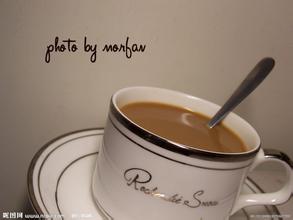Description of the Flavor of Robasta Bean Coffee Powder introduction to the varieties of Coffee trees
Congo, which originated in Africa, accounts for 20% of the world's output. It is suitable for lowlands below 500 meters. It has strong adaptability to the outside world, can resist bad climate, resist diseases and insect pests, and can be allowed to grow in the wild. It is a kind of coffee tree that is easy to cultivate. It is generally used to make instant coffee with strong adaptability to the outside world. It can resist bad climate, resist diseases and insect pests, and prepare the land. Weeding and pruning do not require much manual care, and can be allowed to grow in the wild. It is a kind of coffee tree that is easy to cultivate. But its flavor is more bitter than Arabica, and its quality is much lower, so it is mostly used to make instant coffee. In general, the coffee sold in fast food restaurants is mainly made of coffee beans grown in Robasta. Since its origin is in Africa, most Africans drink robastian coffee, which describes and defines the taste spectrum of coffee according to its taste (sour, bitter, sweet, salty) and wet aroma (flower, fruit, nut, chocolate, spice, etc.). In fact, as a standardized process, it serves for professional cup testing systems. For the general public who drink coffee is just a simple hobby, there is really no need to take it seriously, not to mention that the taste itself is very subjective. They think that delicious coffee beans are generally divided into two categories. Different soil and climate also have a great impact on the quality of coffee beans. When you buy coffee beans, you may see that dazzling adjectives are used to describe different coffee flavors, such as tropical fruit flavor, caramel flavor, nut flavor, cocoa flavor and so on. But when you do get the beans, you will find that you can't taste so many flavors in the description at all, and you will inevitably laugh at yourself at "dull taste buds" or even lose interest in coffee. In fact, I think it is very normal to taste the flavor that cannot be described. These descriptions of coffee flavor actually come from the coffee flavor wheel produced by SCAA (Specialty Coffee Association of America).

Important Notice :
前街咖啡 FrontStreet Coffee has moved to new addredd:
FrontStreet Coffee Address: 315,Donghua East Road,GuangZhou
Tel:020 38364473
- Prev

Introduction to the time and process of drip steaming of coffee
It's steaming. This step is very important, the main purpose is to remove carbon dioxide from coffee beans and use it to open up the flavor of coffee. Pour the ground beans into the filter paper, gently pat the coffee powder pile with your hand, then pour water from the center of the powder pile and circle it gently. Generally speaking, we recommend twice the amount of coffee powder. If you don't have an electronic scale, when you see the coffee dripping under the filter paper
- Next

Coffee roaster development history Capsule coffee machine introduction
Coffee beans were fried in iron pans in the early days. After coffee was introduced into Europe, Europeans used Turkish iron pans to fry beans on the one hand, and later invented hand-rotating roasting, which could bake several pounds of beans at the same time, which was used by some coffee shops. In the 1860s, large roasters began to appear, and in 1867 the use of blowers to cool beans after roasting gave birth to
Related
- Beginners will see the "Coffee pull flower" guide!
- What is the difference between ice blog purified milk and ordinary milk coffee?
- Why is the Philippines the largest producer of crops in Liberia?
- For coffee extraction, should the fine powder be retained?
- How does extracted espresso fill pressed powder? How much strength does it take to press the powder?
- How to make jasmine cold extract coffee? Is the jasmine + latte good?
- Will this little toy really make the coffee taste better? How does Lily Drip affect coffee extraction?
- Will the action of slapping the filter cup also affect coffee extraction?
- What's the difference between powder-to-water ratio and powder-to-liquid ratio?
- What is the Ethiopian local species? What does it have to do with Heirloom native species?

